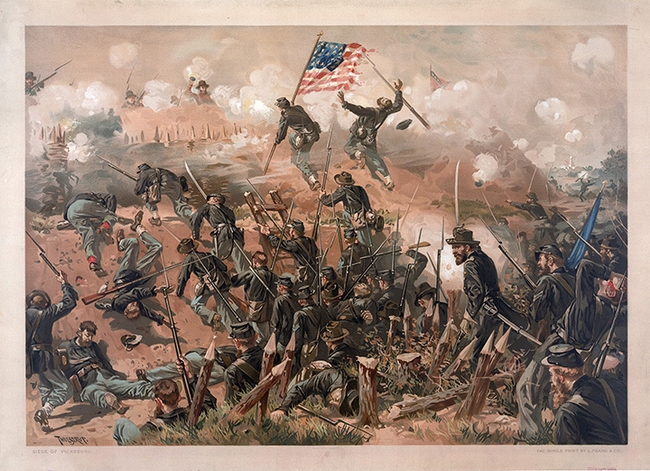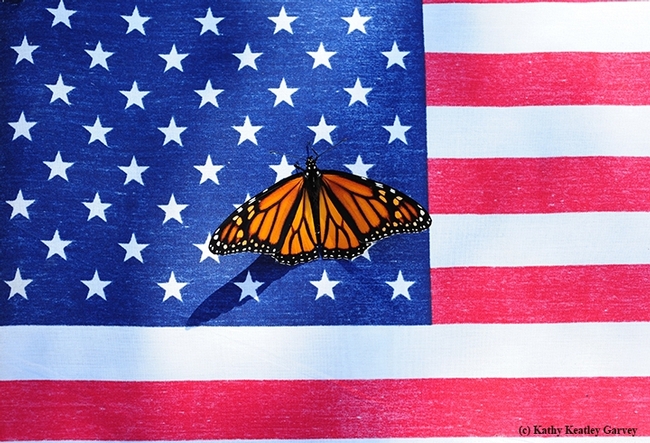
Posts Tagged: Memorial Day
Malaria, Memorial Day and Memories of the Civil War
Every Memorial Day, I especially remember my great-grandfather, Samuel Davidson Laughlin (1843-1910), a Civil War color bearer who contracted malaria during the Siege of Vicksburg (May 18 -July 4, 1863). The soldiers called the mosquitoes "gallinippers." Physicians had not yet linked...

This work, "The Siege of Vicksburg--Assault on Fort Hill," is by Swedish-born American illustrator Thure de Thulstrup (1848-1930), whom his contemporary critics considered "the foremost military artist in America." (Image courtesy of Wikipedia)
Flying High, Flying Free
An American flag flies from its sky-high pole at our home year-around. A U.S. Air Force veteran lives here, and the survivors of generations of veterans, starting with the American Revolution, live here. On Memorial Day, Flag Day and Veterans' Day, we pause and pay tribute to all who served in...

A monarch butterfly, Danaus plexippus, flutters on the American flag. (Photo by Kathy Keatley Garvey)
Coming Soon to Your Next Memorial Day Picnic -- Insects as Food and not Pests?
"Insects provide food at low environmental cost, contribute positively to livelihoods, and play a fundamental role in nature."
Insects form part of the traditional diets of at least 2 billion people according to a recent report by the UN Food and Agriculture Organization: Edible Insects, Future prospects for food and feed security. http://www.fao.org/docrep/018/i3253e/i3253e.pdf
Over 1,900 species have reportedly been used as food. The most commonly consumed insects are beetles (Coleoptera) (31 percent), caterpillars (Lepidoptera) (18 percent) and bees, wasps and ants (Hymenoptera) (14 percent).
Highlights from the report:
- Insects are a highly nutritious and healthy food source with high fat, protein, vitamin, fibre and mineral content.
- The environmental benefits of rearing insects for food and feed are founded on the high feed conversion efficiency of insects. Crickets, for example, require only 2 kilograms of feed for every 1 kilogram of bodyweight gain.
- Because of their nutritional composition, accessibility, simple rearing techniques and quick growth rates, insects can offer a cheap and efficient opportunity to counter nutritional insecurity by providing emergency food and by improving livelihoods and the quality of traditional diets among vulnerable people.
- Insects offer a significant opportunity to merge traditional knowledge and modern science in both developed and developing countries.
"Insect rearing for food and feed remains a sector in its infancy, and key future challenges will likely emerge as the field evolves. As such, readers are encouraged to contact the authors with feedback on this book. Such contributions will undoubtedly assist the future development of the sector."
While it's unlikely many of us in the US will be dining on insects during this year's Memorial Day picnics, maybe someday soon those pesky ants will be forming the basis of grandma's famous potato salad.
Edible Insects

